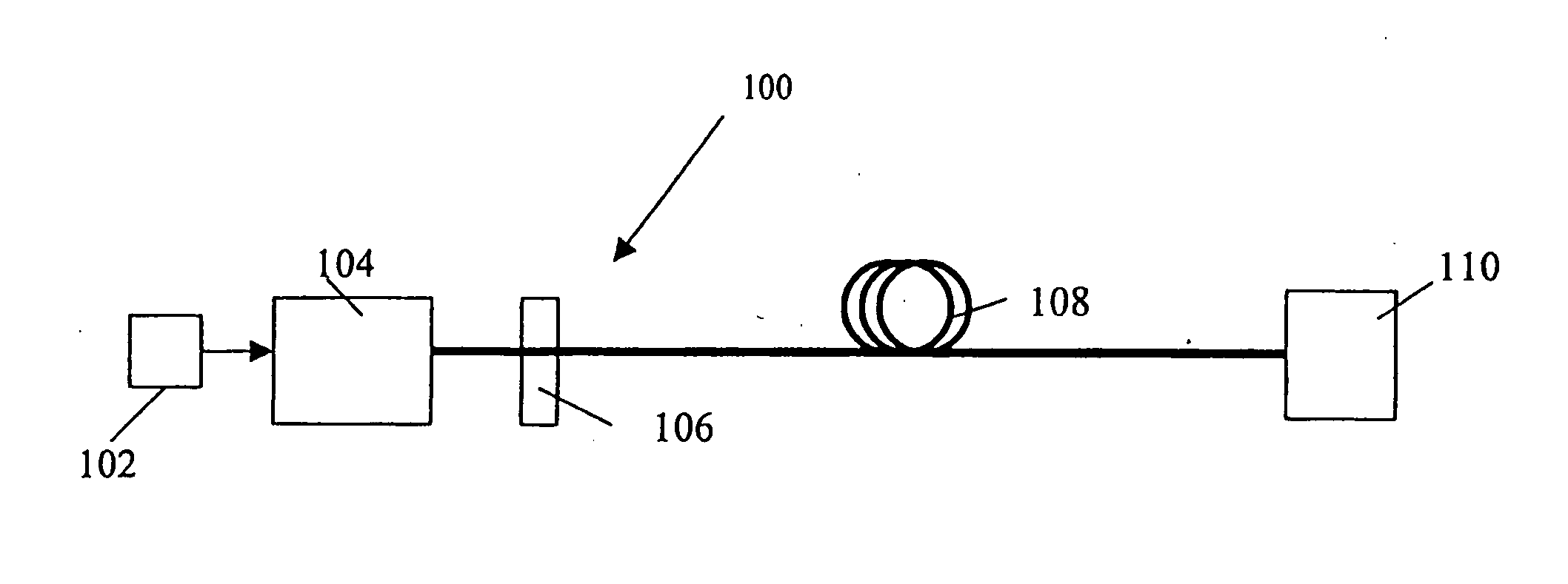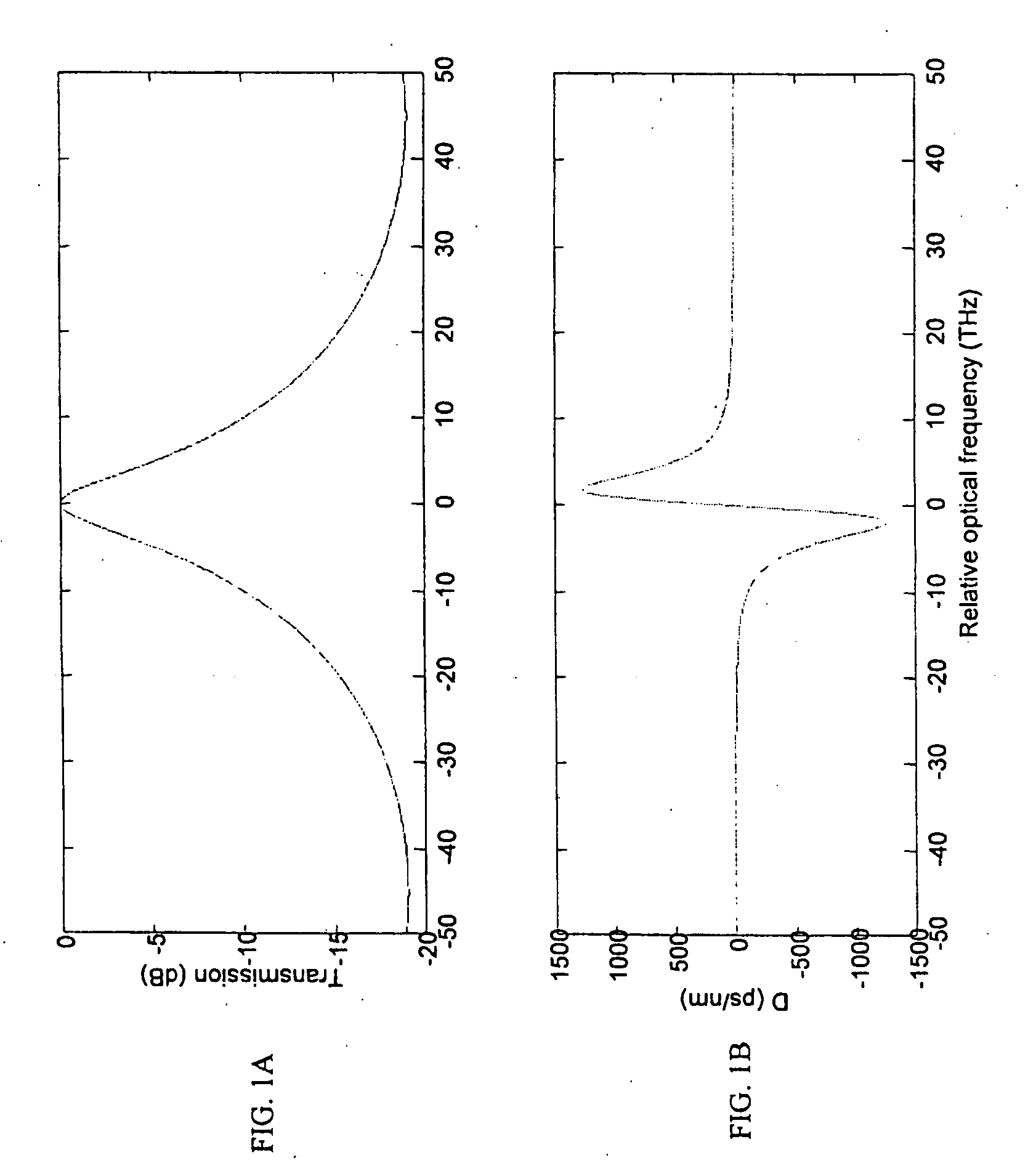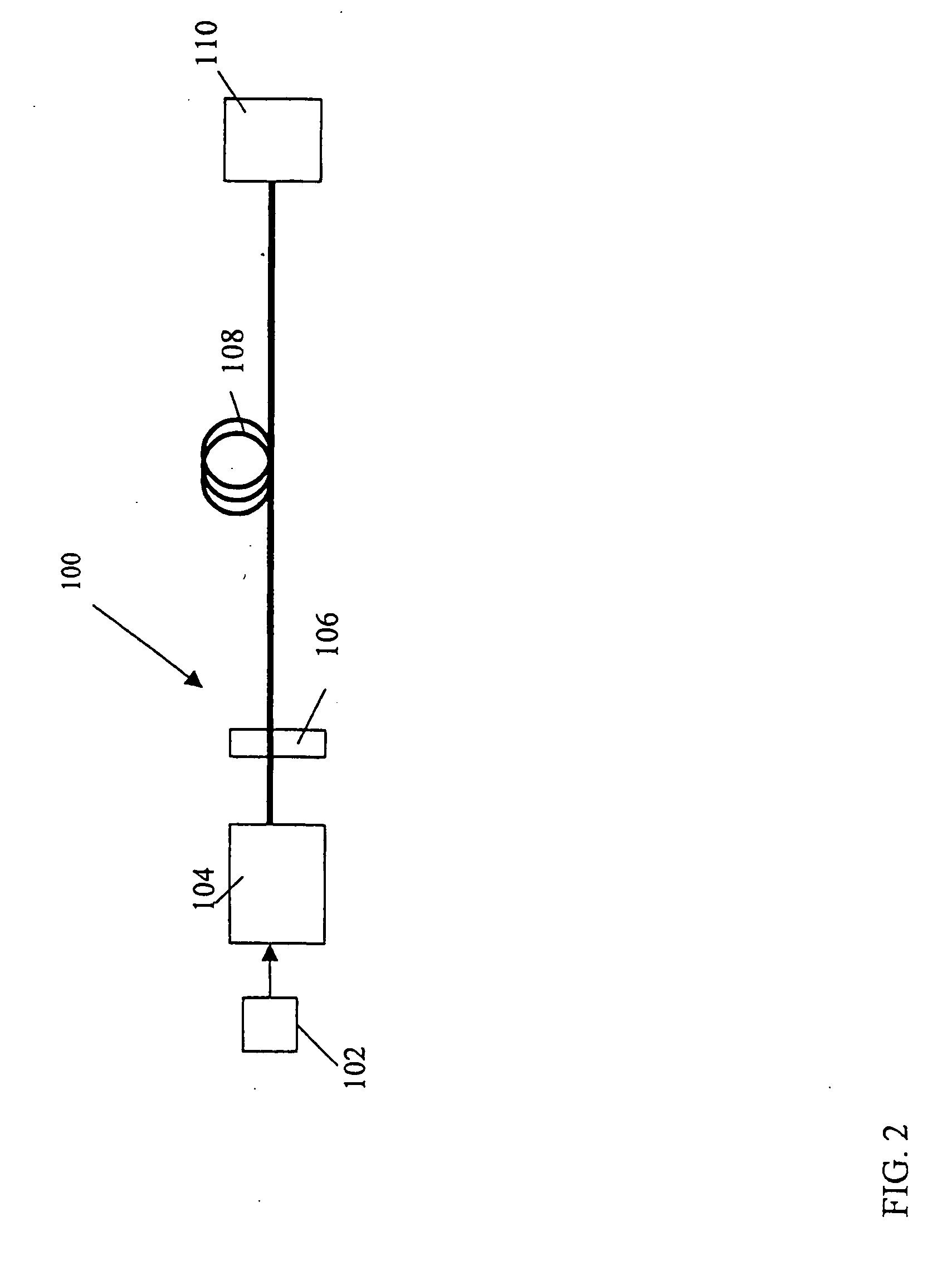Power source for a dispersion compensation fiber optic system
a fiber optic system and power source technology, applied in the field of fiber optic system power source, can solve the problems of high chirping output, increased system power penalties to unacceptable levels, limited the use of direct modulated laser transmitters to applications, etc., and achieve the effect of minimizing the degradation of signal due to fiber dispersion
- Summary
- Abstract
- Description
- Claims
- Application Information
AI Technical Summary
Benefits of technology
Problems solved by technology
Method used
Image
Examples
Embodiment Construction
[0045] This invention provides a laser transmitter system capable of directly modulating a laser source and partially compensating for the dispersion in the fiber so that the system may be applied to faster bit rate and longer reach applications. This may be accomplished by providing a discriminator that converts frequency modulation (FM) to amplitude modulation (AM) and compensate for the dispersion in the optical fiber so that the laser source may be directly modulated. A variety of discriminators may be used such as a coupled multi-cavity (CMC) filter to enhance the fidelity of FM / AM action as well as introducing enhanced dispersion compensation. By simultaneously optimizing the FM to AM conversion as well as the dispersion compensation properties, the performance of directly modulating the laser source may be optimized.
[0046]FIG. 2 illustrates a fiber optic system 100 that includes a current modulator 102 that modulates a laser source 104. The current modulator 102 may directly...
PUM
 Login to View More
Login to View More Abstract
Description
Claims
Application Information
 Login to View More
Login to View More - R&D
- Intellectual Property
- Life Sciences
- Materials
- Tech Scout
- Unparalleled Data Quality
- Higher Quality Content
- 60% Fewer Hallucinations
Browse by: Latest US Patents, China's latest patents, Technical Efficacy Thesaurus, Application Domain, Technology Topic, Popular Technical Reports.
© 2025 PatSnap. All rights reserved.Legal|Privacy policy|Modern Slavery Act Transparency Statement|Sitemap|About US| Contact US: help@patsnap.com



